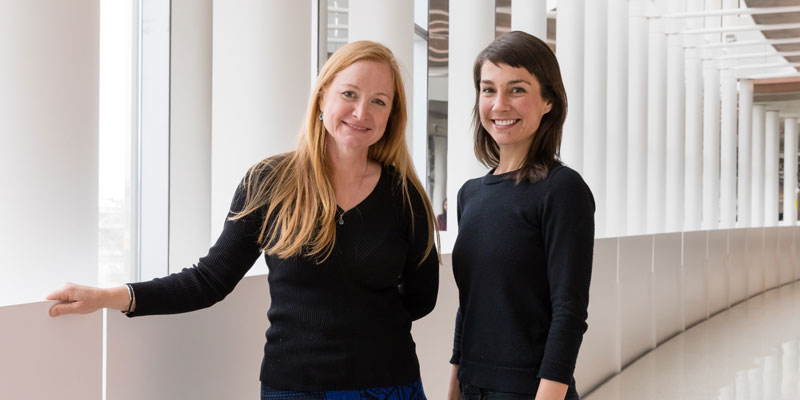Participants from higher education institutions across the country recently met at the U of M to discuss future directions for research.

Sehoya Cotner and Cissy Ballen
Late last month, researchers from institutions around the country met at the University of Minnesota to kick off a new collaboration led by Sehoya Cotner and Cissy Ballen. The pair launched the National Science Foundation-funded Equity and Diversity in Undergraduate STEM (EDU-STEM) network whose theme is to identify and reduce barriers to full participation in STEM fields. Ballen answered a few questions about the fledgling effort.
Why create a collaborative network to study this topic?
On one level, conducting experimental research at this scale will produce a dataset of unprecedented size and scope, and it's an incredible opportunity to test educational innovations in a wide variety of contexts across a spectrum of students and instructors. On a personal level, spending a weekend with these biologists was really inspiring. These are individuals who love science and are passionate about teaching.
You held your first EDU-STEM meeting in October. How did it go?
We had 20 participants, including five community college faculty, seven faculty from Minority Serving Institutions (MSIs) and Historically Black Colleges/Universities (HBCUs), seven from R1 institutions, and one cognitive psychologist. It was an amazing group and so, so motivating! We spent the weekend discussing our emerging data, as well as strategies for testing in-class interventions to counter barriers to equity in STEM.
What's next for EDU-STEM?
This fall we are collecting baseline data from multiple classes across all institutions to get an idea for what types of barriers students face in STEM at the classroom level, the institutional level, and the national level. In the next stage of this research, we will pilot experimental manipulations that instructors can easily implement in their classrooms, and see how these affect students across different contexts. Early next year we are applying for a larger network grant, and if successful, we will expand our network geographically and across disciplines.